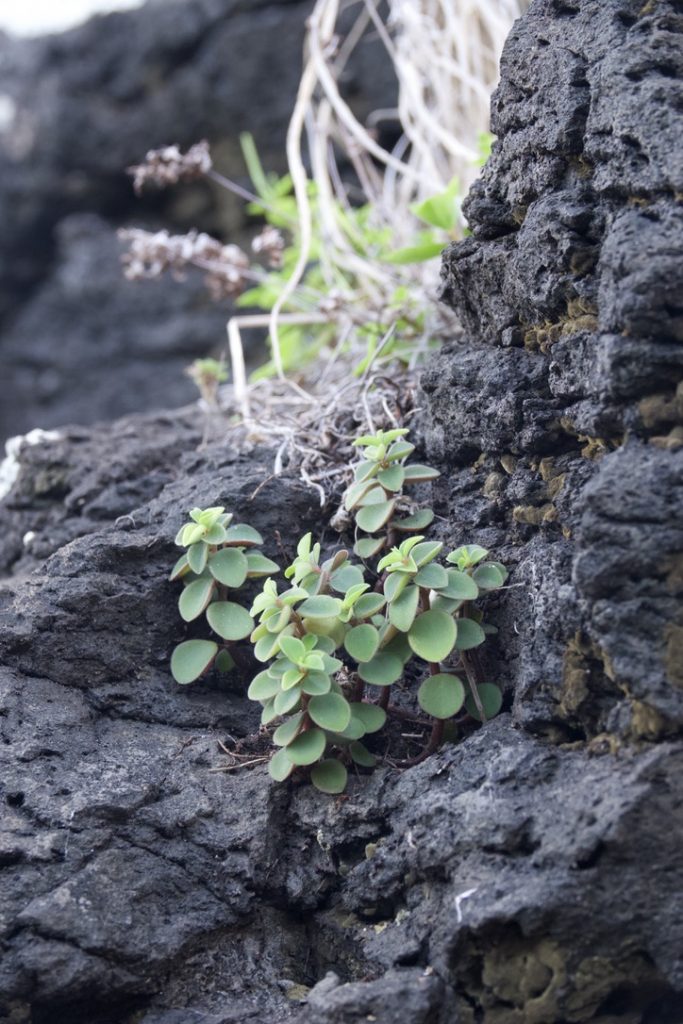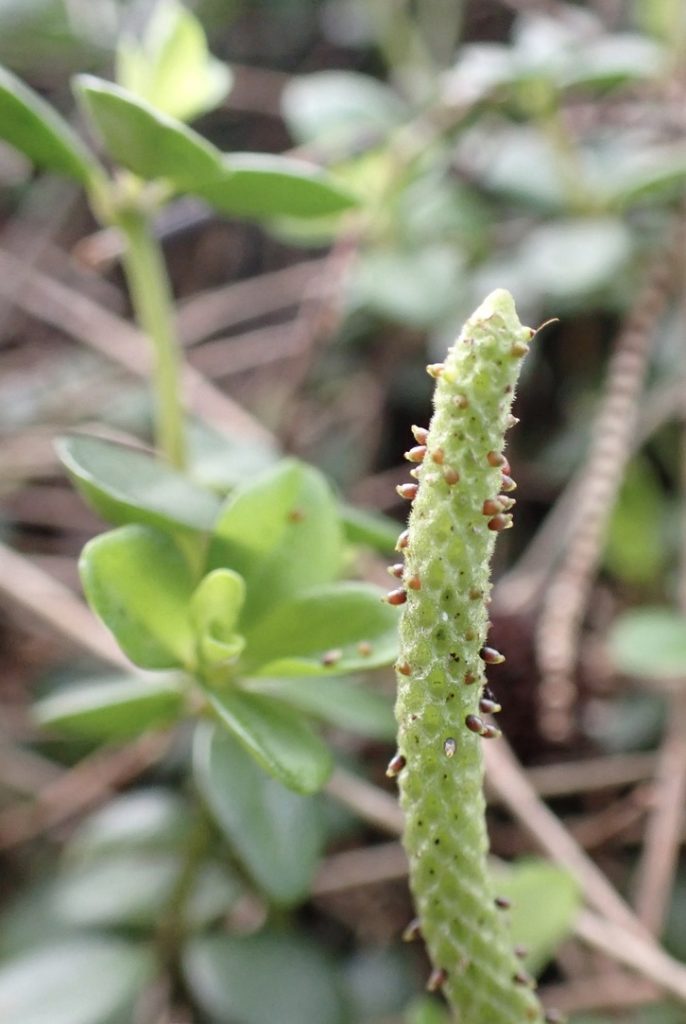Ulu Kanu: Peperomia spp and Codium reediae

Why Two?
August 31st was the birthday of a Hawaiian historian named Rubellite Johnson. September 2nd is the birthday of her majesty Queen Liliʻuokalani. Born nearly a century apart, what do these women have in common and what do they have to do with plants? Well, one famously translated the Kumulipo during her imprisonment, and the other literally wrote “the book” on it. Therefore, it is partly because of these mana wahine (powerful women) that we have the knowledge we do today about this chant and all the wisdom contained within it.
For those unfamiliar, the Kumulipo is a mele koʻihonua, a genealogical chant that links us to our ancestors, the stars, the land, and all living things. It honors the connections we all share and the duality that exists within us all. The 2,000-line chant is divided into 16 wā (ages) that take us on a journey of evolution from darkness to light. In the different ages, there are pairings of plants, animals, or a mixture of the two that are related in some way.
In the very first age, part of the fourth verse reads: The Aʻalaʻula was born and lived in the sea; Guarded by the ʻAlaʻala wai nui that grew in the forest. ʻAlaʻala wai nui (Peperomia spp.) has many medicinal uses and is often prescribed in conjunction with plants such as the edible seaweed, aʻalaʻula (Codium reediae). So to honor their relationship, we are going to learn about two plants this month.
More About Them
ʻAlaʻala wai nui is in the Piperaceae (pepper) family. Many have found the scientific name easy to remember if they think of it as a pepperoni pizza. Though it can be ingested, it is not quite as delicious as pizza.
In Hawaiʻi, there are 24 species, 23 of which are endemic to our islands. This plant can be found in different environments from dry rocky areas in full sun to the shady areas of mesic forests. Most often, you will see them growing on mossy rocks under trees, but you can also see them growing through cracks in concrete.
There are a number of medicinal uses of the plant, including the treatment of ʻea (thrush), waiʻōpua (pulmonary consumption), and other diseases. In each case, the plant was mixed with other things such as hala (Pandanus tectorius), noni (Morinda citrifolia), and ʻuala (Ipomoea batatas or sweet potato). It is sometimes difficult to determine which traditional uses actually involved Peperomia or may have actually been referring to ʻAlaʻala wai nui wahine or Plectranthus parviflorus.
—–
Aʻalaʻula has thallus that are fleshy and composed of somewhat flattened fronds. The fronds are from 1-2 cm wide. It is soft, velvety, and spongy to the touch. They are commonly dark green. These are found subtidally on reef flats and in tidepools. Codium reediae is a popular edible seaweed. It is occasionally referred to as limu wāwaeʻiole, the name more often used for C. edule.
Please forgive my current lack of pictures of this wonderful seaweed…I am working on getting some but didn’t want to wait to feature it in this article. For now, some beautiful photos of the seaweed can be seen here.
How to Plant Them
Seaweeds might be a bit much for most to try to grow at home (though its certainly possible), so I will stick to Peperomia here…
ʻAlaʻala wai nui can be grown from seed, but because they are difficult to extract from the small fruits, it is easier just to sow the entire fruit. You will know the fruits are mature when they are brown and black and stick to your fingers. Simply gather a fruit spike and mist them into a pot with some good growing media. A nice seedling media mix is one-third peat moss, one-third perlite, and one-third black cinder. Water this once a day and it should germinate in a few months and sprout further after another couple months.
The easiest way to grow it, though, is through division. Remove a plant from its pot and gently divide it into two or more new plants and repot. Easy peasy.
ʻAlaʻala wai nui does well in the garden but also inside. It can be happy under artificial sunlight, but is happiest near a bright window (that’s where mine is). Be careful, both inside and out, not to overwater as that can rot the stems and roots. If it’s outside, watch for pests like slugs or snails.
Sources
http://data.bishopmuseum.org/ethnobotanydb/ethnobotany.php?b=d&ID=alaalawainui
https://www.hawaii.edu/reefalgae/invasive_algae/chloro/codium_reediae.htm
https://www.nativehawaiiangarden.org/flowering-plants/alaala-wai-nui


